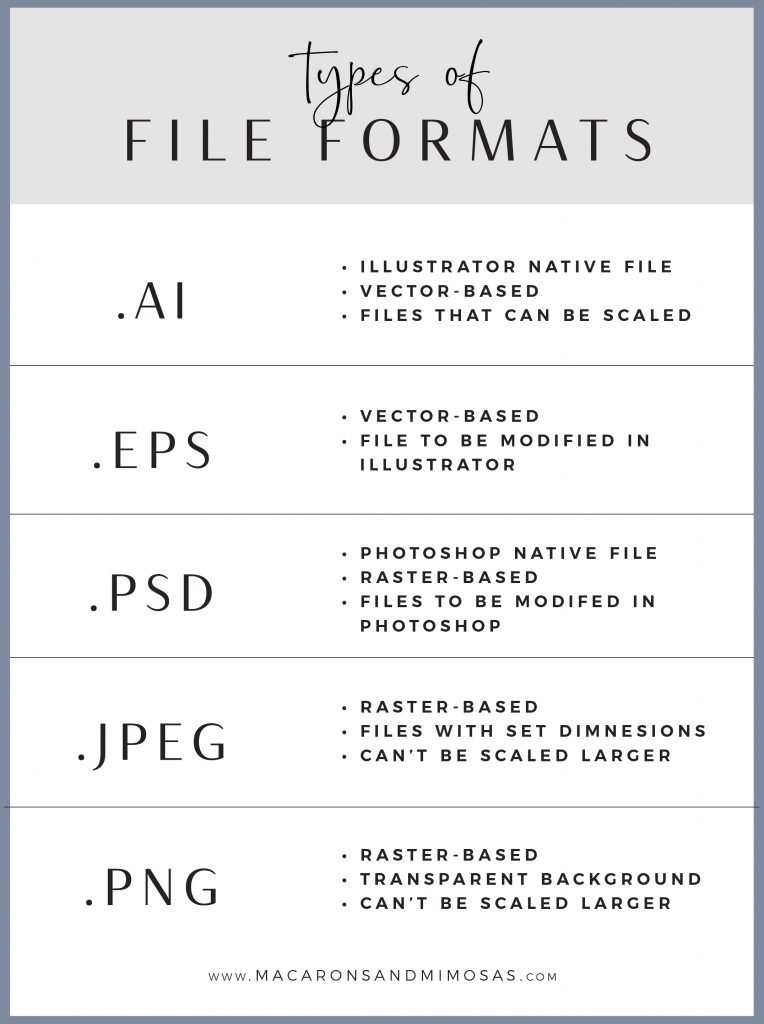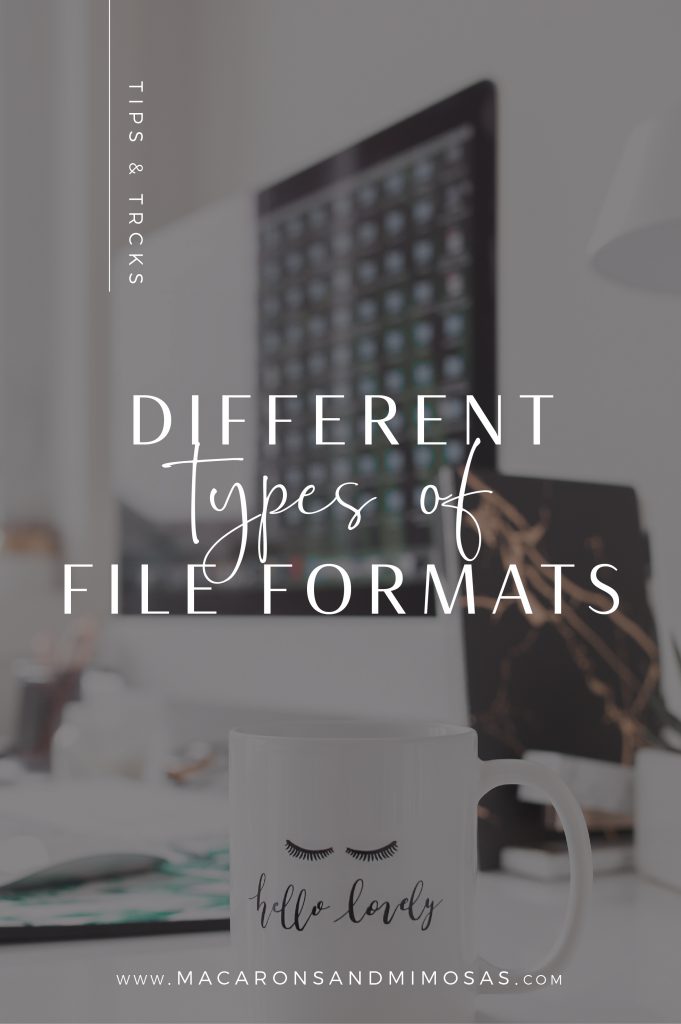Different Types of Graphic File Formats & Extensions
Being a graphic designer, for over 10 years… I have worked with many different file formats. Most everything you see printed or on the web comes from some type of image file. Each file format is not created and used equally. The wrong format can produce poor print quality or a bad web image. Before we jump right into the different formats and extensions, let’s first talk about what vectors and bitmaps are and how they are used.
What is a Vector file?
Vector graphics are well suited for logo designs and icons as they are made of lines and points, rather than pixel values. A vector file contains mathematical descriptions therefore when you shrink or enlarge a vector image, your graphic gets larger but you will not lose any detail or quality… that is how you can scale your graphic to the size of a building and it still looks crisp! Adobe Illustrator is a widely used vector program (AI, EPS, PDF). Vector graphics are great for large print jobs such as signs, wraps, and vinyl, as well as embossing, embroidering, and engraving.
What is a Bitmap
Bitmap graphics are well-suited for photographs. These files are also referred to as raster or pixel-based files. Raster images are made from a grid of dots, where each pixel is assigned a specific single color. Unlike vector files, when you enlarge a raster file you are stretching the actual pixels themselves, which results in a pixelated or blurry image. Raster images are typically used for photographs, digital artwork, and web graphics (such as email, social media content, and banner ads) One of the most popular bitmap programs is Adobe Photoshop (PSD).

AI (vector based)
AI is Adobe Illustrator’s native file format. You must have Illustrator to use or open this file type. Illustrator is the essential program used to create logos and graphics in. AI format also allows for multiple layers so your files can be fully editable. This is a vector based file perfect to send to your printer for large signs, wraps, embroidery, embossing, foiling, and special printing techniques. It’s always better to work with a designer who creates your logos in AI format, as this is the true professional program in which a logo should be created in.
EPS (vector based/or Bitmap)
While some printers might request EPS files, you should be advised that the only true Vector EPS file is saved from Adobe Illustrator and not Photoshop. As we have learned, Photoshop is a bitmap program, so EPS’s saved from Photoshop will not be true Vector EPS files. True EPS files are great for Vinyl-cutting and engraving. A true vector EPS file will allow you to shrink or enlarge the graphic without loss of quality.
PSD (raster based)
PSD is the native file format for Adobe Photoshop. Photoshop files support multiple layers and thus can be fully edited with adjustments. PSD files are perfect for photo touchups, color correcting, and editing artwork for digital or print. If working with a graphic designer, your designer should never use Photoshop to create your logos in, as this is not a professional logo program to use.
JPG (rater based)
JPG files are great for both web and print. However, if you are printing you should always make sure your files are saved to at least 300DPI or higher. This format does not support transparency, as JPGs do not have a transparent channel and must have a solid color background. JPG is also a flattened file format, meaning that you cannot edit the file, as the layers are not separated. JPG files are perfect for the web. 🙂
PNG (raster based)
PNG files have built-in transparency, which allows you to save the file without a white or colored background. This file format is perfect for photographers or bloggers looking to watermark their photographs. These are flattened files and layered. But, since there is no background, it allows you to change the color of the entire graphic to a single color, with the use of a color overlay. PNG files are perfect for web use 🙂
As my husband always says….. Now you know, and knowing is half the battle… G.I.Joe. 😉


Leave a Reply